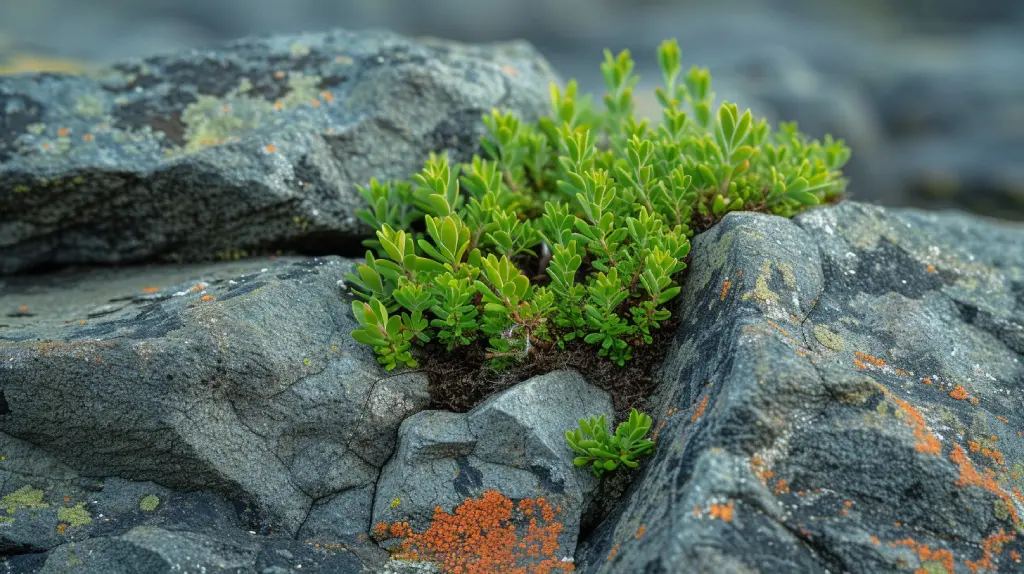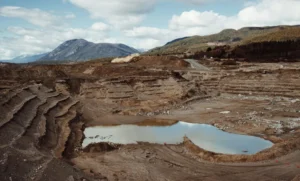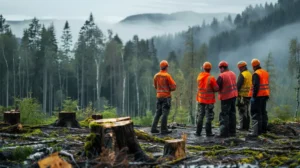Pioneer species are the first organisms to arrive in lifeless ecosystems or where life has been destroyed. These species are very important in the process of ecological succession because it is how life recovers and thrives over time.
Pioneer species, especially pioneer plants, have good adaptations for harsh conditions, establishing ground for other species to eventually flourish.
They initiate the ecological recovery process by paving the way for more advanced species. Without the pioneer species, the route to the climax community-a stable and thriving environment-would be much longer. The ability of pioneer species to rapidly occupy and transform empty landscapes is one that’s crucial for ecological recovery initiation.
Pioneer Species Characteristics

Tolerance of Extreme Conditions: Pioneers are more tolerant to extreme conditions compared to other species that do not tolerate well in those environments. They grow in areas with bad soils, heat, limited water, and wind exposition. This ability to maintain in such conditions helps them quickly establish in new or disturbed areas.
Rapid Growth and Reproduction: These species grow fast and reproduce abundantly. They often have short cycles of life and spread fast, consuming the available space and resources before other species arrive. Many pioneer species produce huge numbers of seeds or spores that can be carried by the wind or water, enabling them to colonize large areas quickly.
Contributions to Soil Formation: Pioneer species such as lichens and mosses are crucial in the formation of soil. They contribute to breaking down rocks while growing and dying; they leave behind organic matter that improves the condition of the soil for other plants later on.
Asexual Reproduction Methods: Most pioneer species, especially foundation species such as mosses, reproduce asexually. This allows them to colonize even in an unstable environment. Asexual reproduction is very effective in a situation where the environment might be too tight for seed germination or the sexual reproduction process.
Light Requirements: Pioneer species thrive in well-ventilated areas that receive more sunlight. Because they tend to arrive in barren landscapes, there is little or no competition for light so they prefer the open environments.
Types of Pioneer Species

Flora:
- Lichens: Such symbiotic organisms consist of fungi and algae, which are among the first species to grow on bare rock, helping to break it down into soil.
- Mosses: Non-vascular plants which thrive in wet environments, helping in holding moisture and further break down rock.
- Grasses: Rapid grower plants e.g. Poa spp., which cover the ground quickly and protect the soil from erosion.
Fauna:
- Soil Invertebrates: Creatures such as earthworms and ants are important for aerating the soil, which improves its quality for future plants. It is these animals that start nutrient cycling in newly formed ecosystems.
- Amphibians: Some amphibians may occupy new or disturbed areas. Their presence helps in the course of ecological succession.
Role in Ecological Succession
Primary Succession
Pioneer species play a major role in primary succession occurring in areas that have no soil and organic matter. Areas that have no soil and organic matter occur after an event such as volcanic eruptions, retreating glaciers, and others. Such harsh environments are slowly populated by pioneer species such as lichens, mosses that start to grow in the ground thus eventually forming soil and organic matter needed by other plants.
Secondary Succession
Pioneer species are also part of secondary succession, which can be viewed in disturbed sites that still contain soil, such as after a forest fire or flood. Pioneer plants, including grasses and wildflowers, soon colonize the disturbed site to stabilize the environment and make way for more complex species.
Environmental Changes
Pioneer species modify their environment to make it habitable for other species. Lichens, such as the pioneer species Cladonia spp., break up rock surfaces and, therefore contribute to soil formation when they decompose and add organic matter to the soil. This makes the soil fertile enough to enable the growth of the intermediate species that will eventually develop into a climax community over time.
Examples of Pioneer Species

- Lichens (e.g., Cladonia spp.): Break up rock surfaces and thus contribute to soil formation.
- Mosses for instance, Polytrichum spp., acts as moisture retainers and give habitat to other species.
- Grasses such as Poa spp. These are very fast-growing plants that can stabilize disturbed soils in a short period.
- Cyanobacteria for instance, Anabaena spp. These bacteria may fix nitrogen in the soil thus enriching it for other plant growth.
- Flowering Plants such as Lupines, Lupinus lepidus. They are nitrogen fixer plants and thrive in disturbed soils; hence, they can prepare the environment for other species.
The Bottom Line
Pioneer species are fundamental to ecosystem recovery, helping barren or disturbed environments shift into richer, more diverse habitats.
The advantages of pioneer species include their toughness, a rapid growth rate, and an ability to alter their environment for the better. They are conspicuous in both primary succession and in secondary succession.
Since they provide the foundation, these species open the way for subsequent plant and animal communities, keystone species, and indicator species to thrive and ensure a stable balanced ecosystem.
FAQ's
What is the definition of a pioneer species?
Pioneer species are the first organism to colonize a barren area, such as a newly formed volcanic island or a deforested area.
What best describes a pioneer species?
Pioneer species are hardy organisms that can tolerate harsh conditions and are often able to reproduce quickly and disperse their seeds widely.
What is an example of a pioneer community?
A common example of a pioneer community is the lichens that colonize bare rocks.
Is grass a pioneer species?
Yes, grass can be a pioneer species, especially in grasslands and prairies. It is well-adapted to colonize disturbed areas and can rapidly spread and establish itself.




